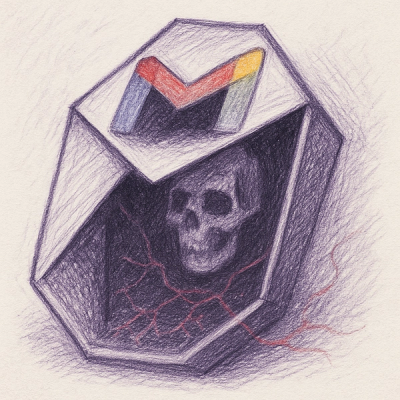
Research
NPM targeted by malware campaign mimicking familiar library names
Socket uncovered npm malware campaign mimicking popular Node.js libraries and packages from other ecosystems; packages steal data and execute remote code.
Mesh replacement for THREE.Line
temporary package:
import * as THREE from 'three';
import { MeshLine, MeshLineMaterial, MeshLineRaycast } from 'meshline';
Instead of using GL_LINE, it uses a strip of triangles billboarded. Some examples:
MeshLine to plot graphsMeshLine with textureMeshLine rendering SVG PathsMeshLine created from a meshMeshLine.advance() by @caramelcode (Jared Sprague) and @mwcz (Michael Clayton)Include script after THREE is included
<script src="THREE.MeshLine.js"></script>
or use npm to install it
npm i three.meshline
and include it in your code (don't forget to require three.js)
const THREE = require('three');
const MeshLine = require('three.meshline').MeshLine;
const MeshLineMaterial = require('three.meshline').MeshLineMaterial;
const MeshLineRaycast = require('three.meshline').MeshLineRaycast;
or
import * as THREE from 'three';
import { MeshLine, MeshLineMaterial, MeshLineRaycast } from 'three.meshline';
First, create the list of numbers that will define the 3D points for the line.
const points = [];
for (let j = 0; j < Math.PI; j += (2 * Math.PI) / 100) {
points.push(Math.cos(j), Math.sin(j), 0);
}
MeshLine also accepts a Geometry or BufferGeometry looking up the vertices in it.
const geometry = new THREE.Geometry();
for (let j = 0; j < Math.PI; j += 2 * Math.PI / 100) {
const v = new THREE.Vector3(Math.cos(j), Math.sin(j), 0);
geometry.vertices.push(v);
}
Once you have that, you can create a new MeshLine, and call .setPoints() passing the list of points.
const line = new MeshLine();
line.setPoints(points);
Note: .setPoints accepts a second parameter, which is a function to define the width in each point along the line. By default that value is 1, making the line width 1 * lineWidth in the material.
// p is a decimal percentage of the number of points
// ie. point 200 of 250 points, p = 0.8
line.setPoints(geometry, p => 2); // makes width 2 * lineWidth
line.setPoints(geometry, p => 1 - p); // makes width taper
line.setPoints(geometry, p => 2 + Math.sin(50 * p)); // makes width sinusoidal
A MeshLine needs a MeshLineMaterial:
const material = new MeshLineMaterial(OPTIONS);
By default it's a white material of width 1 unit.
MeshLineMaterial has several attributes to control the appereance of the MeshLine:
map - a THREE.Texture to paint along the line (requires useMap set to true)useMap - tells the material to use map (0 - solid color, 1 use texture)alphaMap - a THREE.Texture to use as alpha along the line (requires useAlphaMap set to true)useAlphaMap - tells the material to use alphaMap (0 - no alpha, 1 modulate alpha)repeat - THREE.Vector2 to define the texture tiling (applies to map and alphaMap - MIGHT CHANGE IN THE FUTURE)color - THREE.Color to paint the line width, or tint the texture withopacity - alpha value from 0 to 1 (requires transparent set to true)alphaTest - cutoff value from 0 to 1dashArray - the length and space between dashes. (0 - no dash)dashOffset - defines the location where the dash will begin. Ideal to animate the line.dashRatio - defines the ratio between that is visible or not (0 - more visible, 1 - more invisible).resolution - THREE.Vector2 specifying the canvas size (REQUIRED)sizeAttenuation - makes the line width constant regardless distance (1 unit is 1px on screen) (0 - attenuate, 1 - don't attenuate)lineWidth - float defining width (if sizeAttenuation is true, it's world units; else is screen pixels)If you're rendering transparent lines or using a texture with alpha map, you should set depthTest to false, transparent to true and blending to an appropriate blending mode, or use alphaTest.
Finally, we create a mesh and add it to the scene:
const mesh = new THREE.Mesh(line, material);
scene.add(mesh);
You can optionally add raycast support with the following.
mesh.raycast = MeshLineRaycast;
THREE.meshline can be used declaritively. This is how it would look like in react-three-fiber. You can try it live here.
import { extend, Canvas } from 'react-three-fiber'
import { MeshLine, MeshLineMaterial, MeshLineRaycast } from 'meshline'
extend({ MeshLine, MeshLineMaterial })
function Line({ points, width, color }) {
return (
<Canvas>
<mesh raycast={MeshLineRaycast}>
<meshLine attach="geometry" points={points} />
<meshLineMaterial
attach="material"
transparent
depthTest={false}
lineWidth={width}
color={color}
dashArray={0.05}
dashRatio={0.95}
/>
</mesh>
</Canvas>
)
}
Dynamic line widths can be set along each point using the widthCallback prop.
<meshLine attach='geometry' points={points} widthCallback={pointWidth => pointWidth * Math.random()} />
Tested successfully on
MIT licensed
Copyright (C) 2015-2016 Jaume Sanchez Elias, http://www.clicktorelease.com
FAQs
A mesh replacement for `THREE.Line`. Instead of using GL_LINE, it uses a strip of billboarded triangles. This is a fork of [spite/THREE.MeshLine](https://github.com/spite/THREE.MeshLine), previously maintained by studio [Utsuboco](https://github.com/utsub
The npm package meshline receives a total of 336,559 weekly downloads. As such, meshline popularity was classified as popular.
We found that meshline demonstrated a healthy version release cadence and project activity because the last version was released less than a year ago. It has 3 open source maintainers collaborating on the project.
Did you know?

Socket for GitHub automatically highlights issues in each pull request and monitors the health of all your open source dependencies. Discover the contents of your packages and block harmful activity before you install or update your dependencies.

Research
Socket uncovered npm malware campaign mimicking popular Node.js libraries and packages from other ecosystems; packages steal data and execute remote code.

Research
Socket's research uncovers three dangerous Go modules that contain obfuscated disk-wiping malware, threatening complete data loss.

Research
Socket uncovers malicious packages on PyPI using Gmail's SMTP protocol for command and control (C2) to exfiltrate data and execute commands.